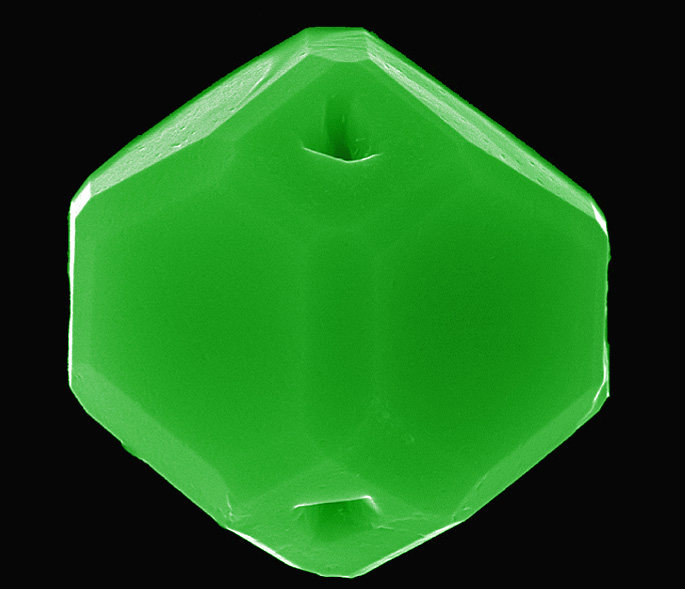This month sees the following articles in CrystEngComm that are in the top ten most accessed:-
Three porous metal–organic frameworks based on an azobenzenetricarboxylate ligand: synthesis, structures, and magnetic properties
Miao Meng, Di-Chang Zhong and Tong-Bu Lu
CrystEngComm, 2011, Advance Article DOI: 10.1039/C1CE05817G
Coordination assemblies of Co ii /Ni ii /Mn ii /Zn ii with 1,1′-biphenyl-2,2′-dicarboxylic acid and three positional isomeric ligands: structural diversity and properties
Fu-Ping Huang, He-Dong Bian, Qing Yu, Jin-Lei Tian, Hong Liang, Shi-Ping Yan, Dai-Zheng Liao and Peng Cheng
CrystEngComm, 2011, 13, 6538-6548 DOI: 10.1039/C1CE05562C
Post-deposition annealing control of phase and texture for the sputtered MoO3 films
Wei-Che Chang, Xiaoding Qi, Jui-Chao Kuo, Shih-chin Lee, Sio-Kei Ng and Delphic Chen
CrystEngComm, 2011, 13, 5125-5132 DOI: 10.1039/C1CE05214D
One-pot self-assembly of flower-like Cu2S structures with near-infrared photoluminescent properties
Na Li, Xiaoling Zhang, Shutang Chen, Wen Yang, Huaizhi Kang and Weihong Tan
CrystEngComm, 2011, 13, 6549-6554 DOI: 10.1039/C1CE05603D
Two azido-bridged copper(ii) coordination polymers with isonicotinate-N-oxide and picolinate-N-oxide acting as co-ligands
Qian Gao, Ya-Bo Xie, Melissa Thorstad, Ji-Hong Sun, Yue Cui and Hong-Cai Zhou
CrystEngComm, 2011, Advance Article DOI: 10.1039/C0CE00914H
Synthesis, structural characterization and properties of Ag(i)-complexes based on double-armed 1,3,4-oxadiazole bridging ligands
Gui-Ge Hou, Yan Wu, Jian-Ping Ma and Yu-Bin Dong
CrystEngComm, 2011, Advance Article DOI: 10.1039/C1CE05718A
Topological variability of Zn(ii) and Co(ii) 3D coordination polymers obtained through solvothermal in situ disulfide cleavage
Yang Bu, Feilong Jiang, Shuquan Zhang, Jie Ma, Xingjun Li and Maochun Hong
CrystEngComm, 2011, 13, 6323-6326 DOI: 10.1039/C1CE05592E
A hydrogen bonded cocrystal with an unusual interweaving between the adjacent triple-helices
Amit Delori and William Jones
CrystEngComm, 2011, 13, 6315-6318 DOI: 10.1039/C1CE05534H
Packing incentives and a reliable N–HN–pyridine synthon in co-crystallization of bipyridines with two agrochemical actives
Elisa Nauha, Erkki Kolehmainen and Maija Nissinen
CrystEngComm, 2011, 13, 6531-6537 DOI: 10.1039/C1CE05730H
Synthesis of mono-dispersed m-BiVO4 octahedral nano-crystals with enhanced visible light photocatalytic properties
Mandi Han, Xiaofeng Chen, Ting Sun, Ooi Kiang Tan and Man Siu Tse
CrystEngComm, 2011, Advance Article DOI: 10.1039/C1CE05539A
Why not take a look at the articles today and blog your thoughts and comments below.
Fancy submitting an article to CrystEngComm? Then why not submit to us today or alternatively email us your suggestions.











 This HOT Article, describes the structural analysis of four new compounds and of known structures of related compounds revealing preferred
This HOT Article, describes the structural analysis of four new compounds and of known structures of related compounds revealing preferred In this HOT article, Chinese researchers report the synthesis and properties of spherical assemblies of NaYF4 nanocrystals via a facile solution-based method. Their novelty lies in the unique structural geometry of the NaYF4 assemblies attached together along one specific crystalline orientation. The impact of organic additives such as citric acid and polyvinylpyrrolidone on the crystal growth was investigated in detail and a possible formation mechanism is also proposed. This interesting hierarchical structure not only offers a high surface area and easy modification surface, but also provides a new efficient host for doping various lanthanide ions to give strong down- or up-conversion emissions. It is anticipated that these unique assembled NaYF4 nanostructures will serve as biolabels in various biomedical applications.
In this HOT article, Chinese researchers report the synthesis and properties of spherical assemblies of NaYF4 nanocrystals via a facile solution-based method. Their novelty lies in the unique structural geometry of the NaYF4 assemblies attached together along one specific crystalline orientation. The impact of organic additives such as citric acid and polyvinylpyrrolidone on the crystal growth was investigated in detail and a possible formation mechanism is also proposed. This interesting hierarchical structure not only offers a high surface area and easy modification surface, but also provides a new efficient host for doping various lanthanide ions to give strong down- or up-conversion emissions. It is anticipated that these unique assembled NaYF4 nanostructures will serve as biolabels in various biomedical applications.
 In this HOT article, Chinese researchers have demonstrated for the first time that ternary cation-alloyed PbSnS nanocrystals could be synthesized via a facile solution-based routine. The mean diameters of the as-prepared nanocrystals ranged from 6–15 nm. Several interesting variations on the crystal structure and band gap energy were indicated. The results could potentially have a high impact on IV-VI quantum dots based optoelectronic applications in the future.
In this HOT article, Chinese researchers have demonstrated for the first time that ternary cation-alloyed PbSnS nanocrystals could be synthesized via a facile solution-based routine. The mean diameters of the as-prepared nanocrystals ranged from 6–15 nm. Several interesting variations on the crystal structure and band gap energy were indicated. The results could potentially have a high impact on IV-VI quantum dots based optoelectronic applications in the future. In this CrystEngComm Hot article William Ducker from the University of Melbourne studies the mechanism for hydrothermal growth of ZnO, in collaboration with Virginia Polytechnic Institute and State University.
In this CrystEngComm Hot article William Ducker from the University of Melbourne studies the mechanism for hydrothermal growth of ZnO, in collaboration with Virginia Polytechnic Institute and State University. The outside cover features research by Yang et al. Highly symmetric polyhedral 50-facet Cu2O homogeneous structures enclosed by 24 high-index {211} facets, and 8 low-index {111} facets, 6 low-index {100} facets and 12 low-index {110} facets have been synthesized via a facile seed-mediated solution phase route.
The outside cover features research by Yang et al. Highly symmetric polyhedral 50-facet Cu2O homogeneous structures enclosed by 24 high-index {211} facets, and 8 low-index {111} facets, 6 low-index {100} facets and 12 low-index {110} facets have been synthesized via a facile seed-mediated solution phase route. John D. Wallis and colleagues at Nottingham Trent University, the University of Southampton, Brock University and the University of Fribourg look at the (1,5) interactions between aldehyde groups and hydroxyl or methoxy groups in this CrystEngComm Hot article.
John D. Wallis and colleagues at Nottingham Trent University, the University of Southampton, Brock University and the University of Fribourg look at the (1,5) interactions between aldehyde groups and hydroxyl or methoxy groups in this CrystEngComm Hot article.